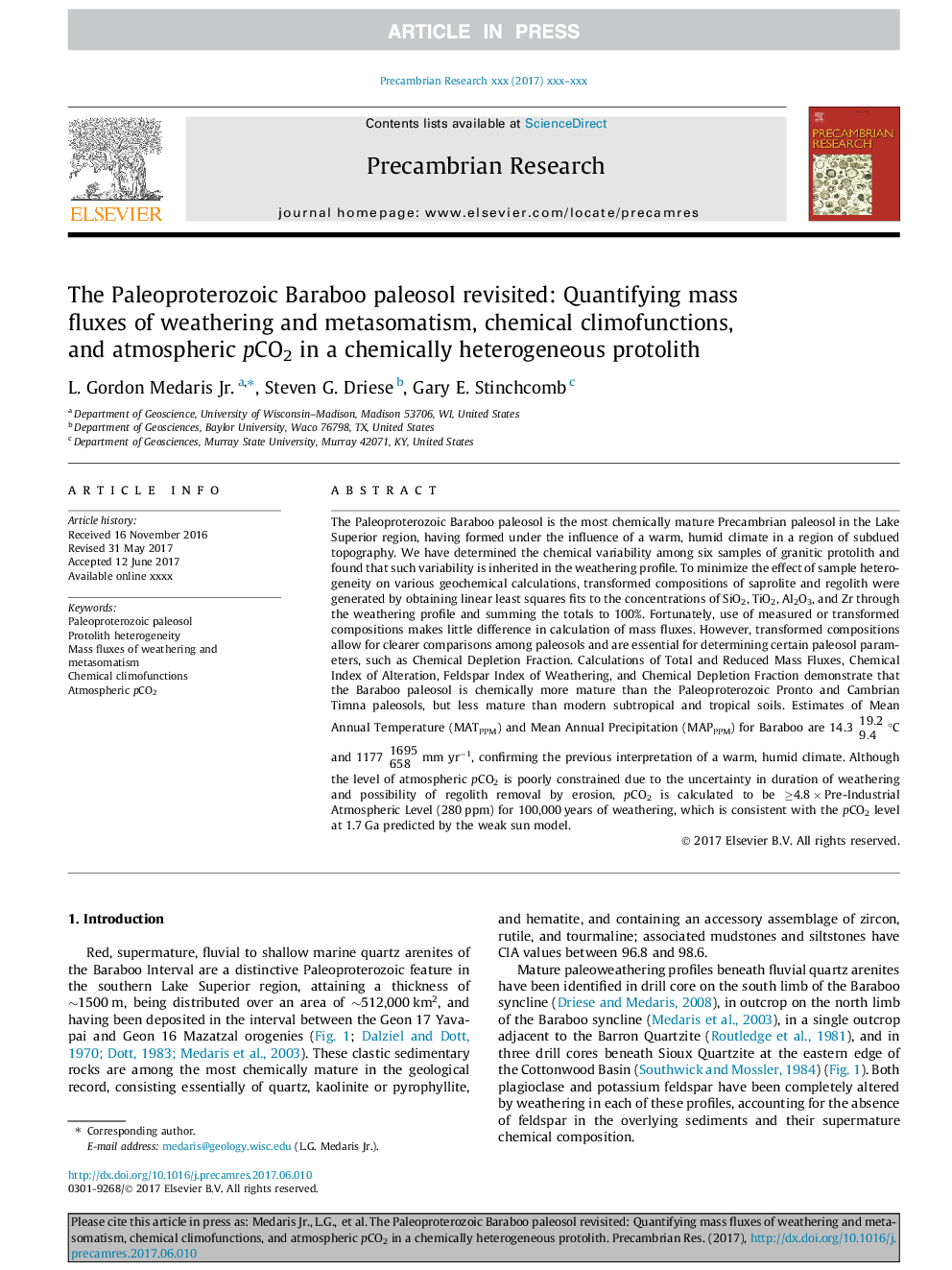| کد مقاله | کد نشریه | سال انتشار | مقاله انگلیسی | نسخه تمام متن |
|---|---|---|---|---|
| 5784673 | 1639574 | 2017 | 16 صفحه PDF | دانلود رایگان |
عنوان انگلیسی مقاله ISI
The Paleoproterozoic Baraboo paleosol revisited: Quantifying mass fluxes of weathering and metasomatism, chemical climofunctions, and atmospheric pCO2 in a chemically heterogeneous protolith
دانلود مقاله + سفارش ترجمه
دانلود مقاله ISI انگلیسی
رایگان برای ایرانیان
کلمات کلیدی
موضوعات مرتبط
مهندسی و علوم پایه
علوم زمین و سیارات
ژئوشیمی و پترولوژی
پیش نمایش صفحه اول مقاله

چکیده انگلیسی
The Paleoproterozoic Baraboo paleosol is the most chemically mature Precambrian paleosol in the Lake Superior region, having formed under the influence of a warm, humid climate in a region of subdued topography. We have determined the chemical variability among six samples of granitic protolith and found that such variability is inherited in the weathering profile. To minimize the effect of sample heterogeneity on various geochemical calculations, transformed compositions of saprolite and regolith were generated by obtaining linear least squares fits to the concentrations of SiO2, TiO2, Al2O3, and Zr through the weathering profile and summing the totals to 100%. Fortunately, use of measured or transformed compositions makes little difference in calculation of mass fluxes. However, transformed compositions allow for clearer comparisons among paleosols and are essential for determining certain paleosol parameters, such as Chemical Depletion Fraction. Calculations of Total and Reduced Mass Fluxes, Chemical Index of Alteration, Feldspar Index of Weathering, and Chemical Depletion Fraction demonstrate that the Baraboo paleosol is chemically more mature than the Paleoproterozoic Pronto and Cambrian Timna paleosols, but less mature than modern subtropical and tropical soils. Estimates of Mean Annual Temperature (MATPPM) and Mean Annual Precipitation (MAPPPM) for Baraboo are 14.3 19.29.4 °C and 1177 1695658 mm yrâ1, confirming the previous interpretation of a warm, humid climate. Although the level of atmospheric pCO2 is poorly constrained due to the uncertainty in duration of weathering and possibility of regolith removal by erosion, pCO2 is calculated to be â¥4.8 Ã Pre-Industrial Atmospheric Level (280 ppm) for 100,000 years of weathering, which is consistent with the pCO2 level at 1.7 Ga predicted by the weak sun model.
ناشر
Database: Elsevier - ScienceDirect (ساینس دایرکت)
Journal: Precambrian Research - Volume 301, October 2017, Pages 179-194
Journal: Precambrian Research - Volume 301, October 2017, Pages 179-194
نویسندگان
L. Gordon Jr., Steven G. Driese, Gary E. Stinchcomb,